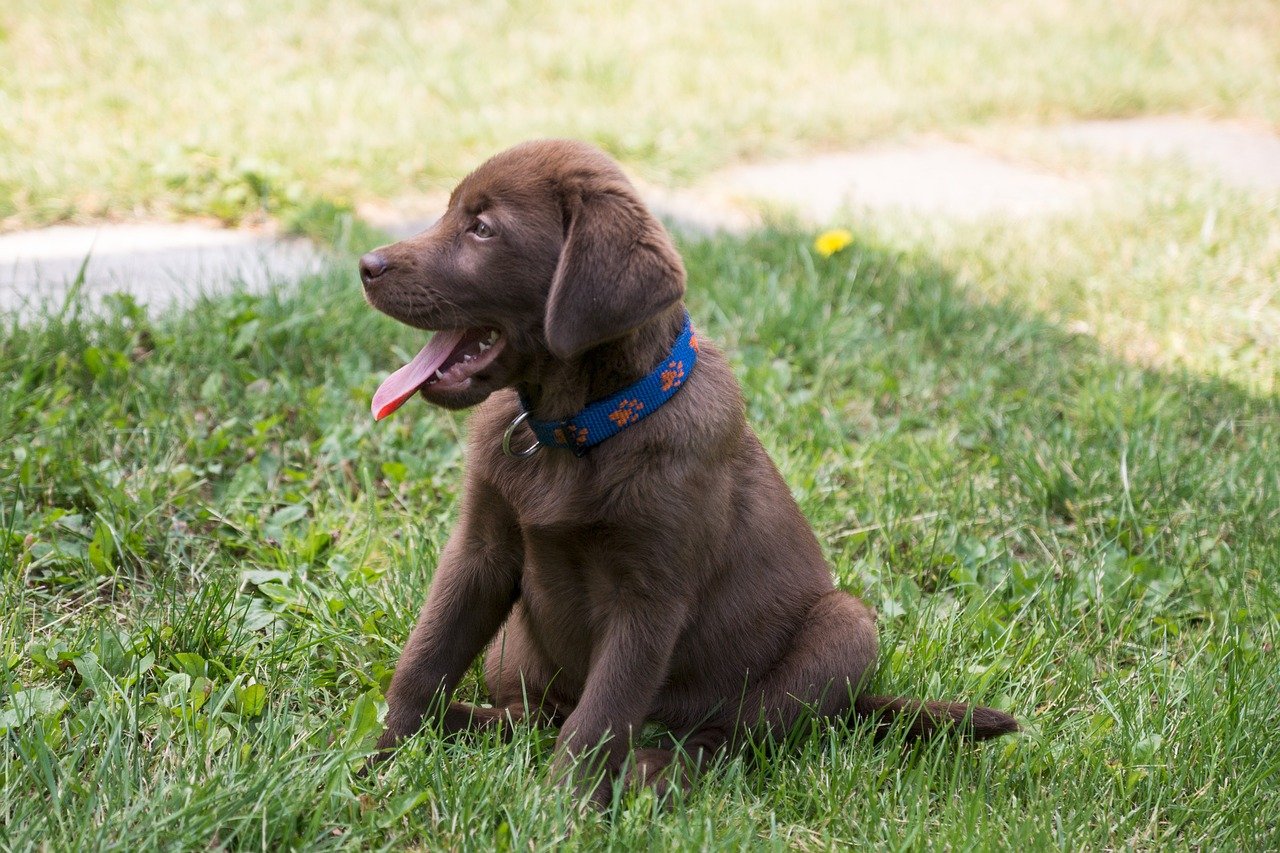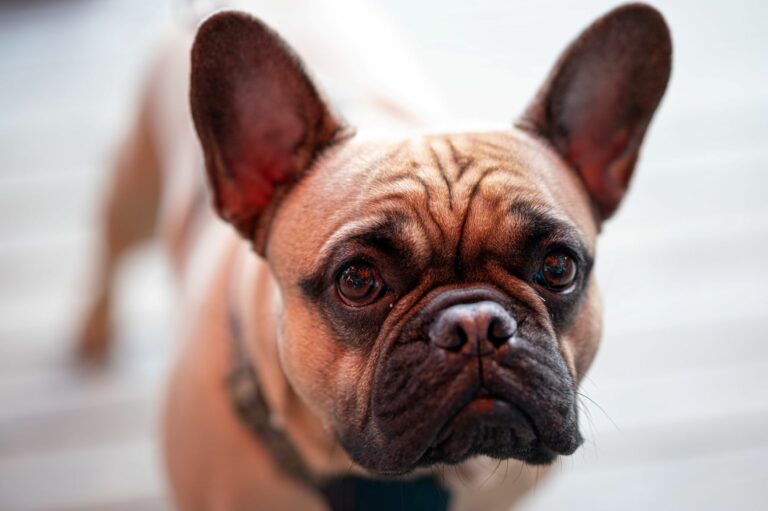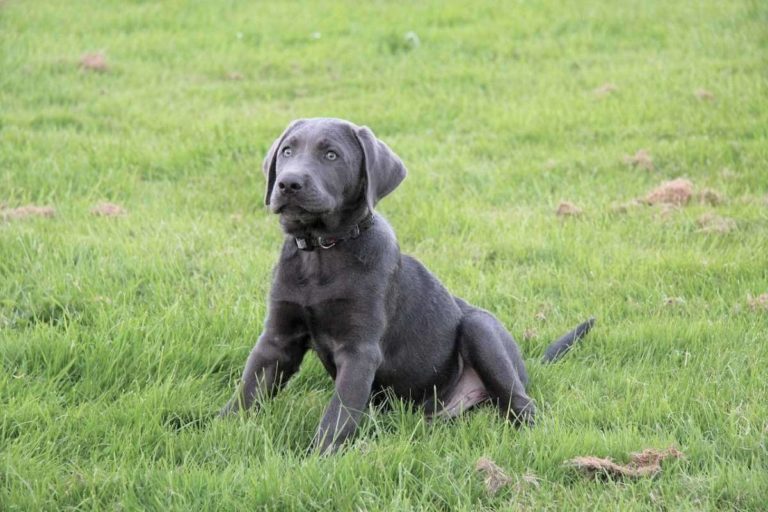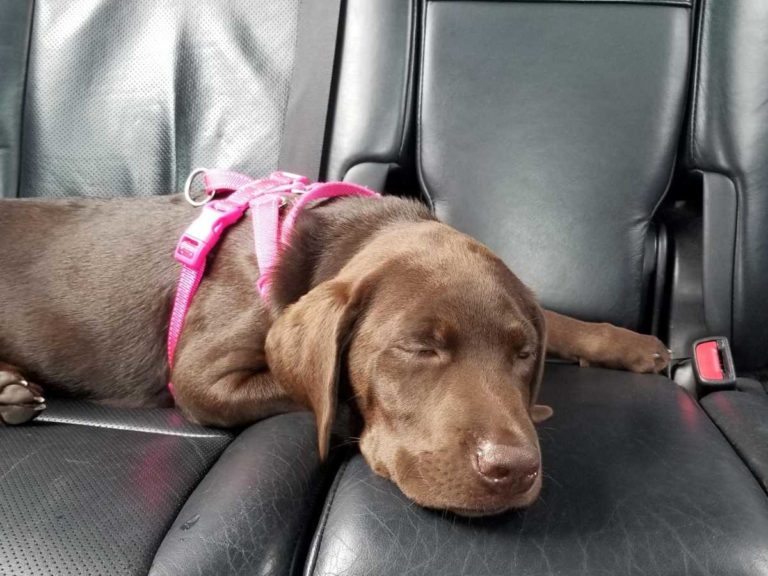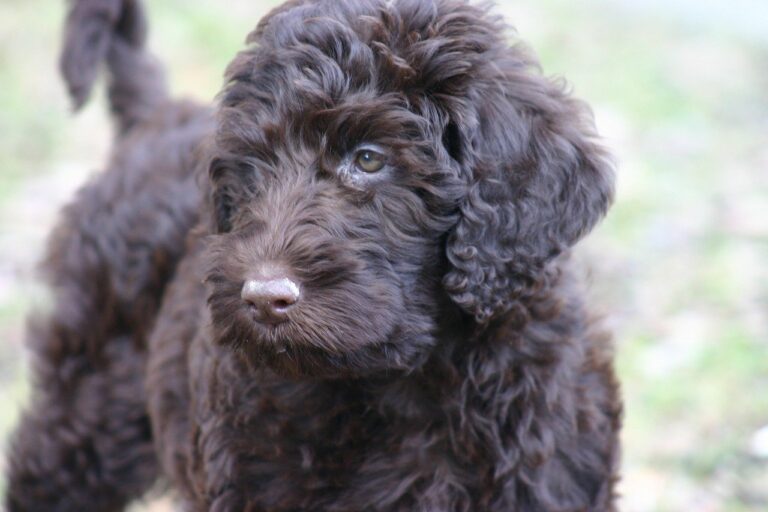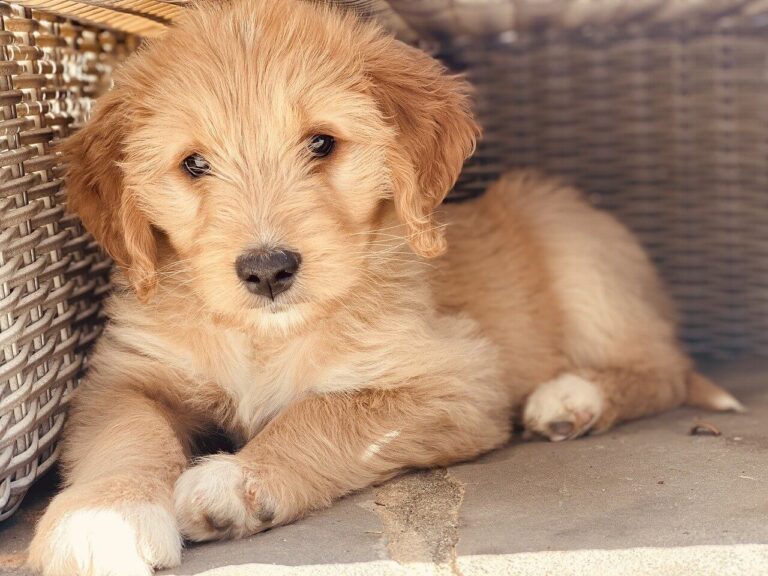Getting a new Labrador Retriever puppy can be a very exciting adventure! And the first few days at home can be a really fun time, but also a little chaotic and stressful.
In all the excitement and anticipation of getting a new dog, there are a few things you can do ahead of time to reduce stress and make life easier.
It’s always a good thing to be prepared, and that’s especially true for new puppies!
We’re going to go over seven steps to take before you bring your puppy home to help you be less stressed and more excited about your new arrival!
(This article may contain affiliate links. As an Amazon Associate I earn from qualifying purchases. Learn more)
7 Things to Do Before You Bring Your New Puppy Home
1. Discuss Expectations with Your Entire Household
One of the most important things to do before you bring your new puppy home is to communicate with your family or household how much responsibility the new puppy is going to bring.
This is especially important if you have children, because they may be unaware of how their interactions can affect the puppy’s behavior.
It’s important to know that if this is your first dog, you might be unsure of how much work this puppy is going to be. At first, your new puppy may seem overwhelming and exhausting, but it will get easier with time.
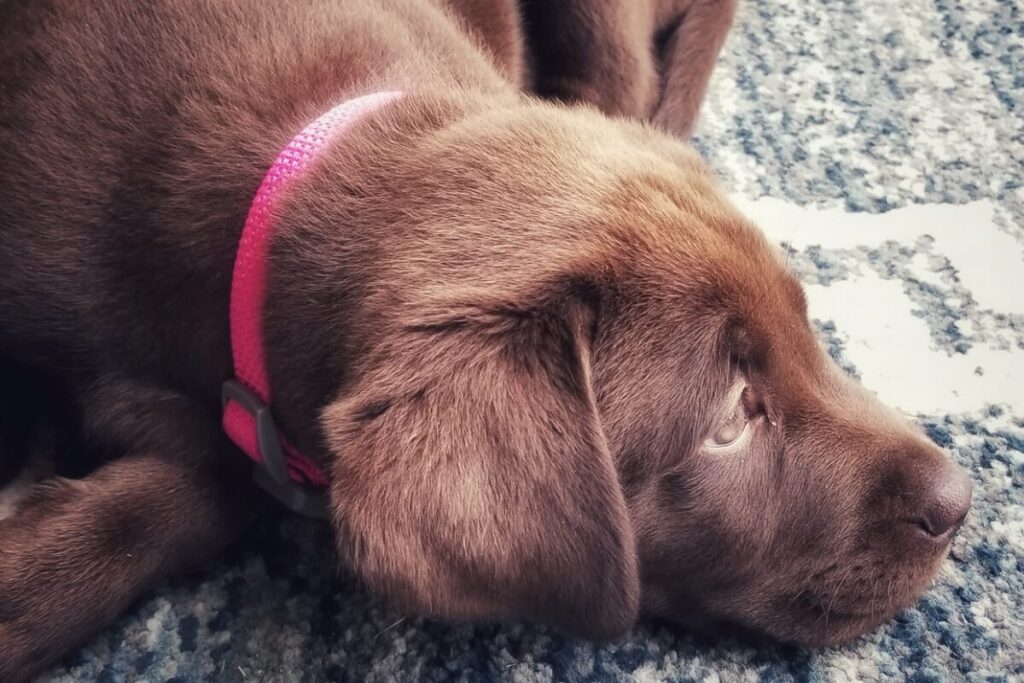
Before your puppy arrives in your home, make sure to discuss with your family or household members how the work of caring for the puppy is going to be handled.
- Who’s going to feed the puppy?
- Who will be responsible for most of the supervision? (Moms, you might not want to leave this one to your kids!)
- Who will be responsible for walking the puppy and cleaning up after it?
- Who will be doing most of the training?
These topics are fluid and can change, but it’s a really good idea to go over at least beginning expectations first before the dog arrives.
Make sure that if you have children, the responsibilities you give them in helping with the puppy’s care are not going to overwhelm them.
You know the maturity and temperament of your kids best – it’s a good idea to start with “small jobs” and let them work up to harder things.
You don’t want to frustrate your kids or the puppy with not having their needs met, which will only cause more irritation for you.
2. Gather the Essential Gear
Like babies, it seems like there are now 50 million pet products that everyone says you need to have. We’re here to tell you that you don’t.
Having purchased a lot of those ourselves, we can tell you that many of them are a HUGE waste of money and don’t perform as they should.
You don’t need to buy a million things when you first bring your puppy home.
You’re already going to be excited and slightly overwhelmed at all of the cute chaos going on, and spending a ton of time shopping is not our recommendation as one of the seven things to do before you bring your new puppy home.
Feel free to go wild on puppy supplies if you want to, but you don’t have to, unless it’s your thing.
You just need a short list of critical items that you DO need, and we’re going to give it to you here!
We do have a few recommended items below that you will want to make sure you get before you bring your puppy home.
Critical Items Recommended Before Bringing Home Your New Puppy:
- Dog water and food bowls – we suggest stainless steel
- Puppy food/dog food (ask the breeder or shelter/rescue what food they are on to keep consistency and prevent tummy troubles. Later on, you can get a recommendation for puppy food from your veterinarian)
- A wire crate for your puppy to sleep in
- A padded pet mat for inside the crate
- Leash
- Dog collar
- ID tags (you can get these made at a pet store, or order on Amazon)
- A baby gate/puppy gate to block off certain areas
- Puppy pads or a stack of inexpensive towels for clean-up
- Fragrance-free baby wipes (good for wiping paws and quick fur clean-up)
- A few puppy toys (Labs love toys such as Kongs, tennis balls, or Nylabones)
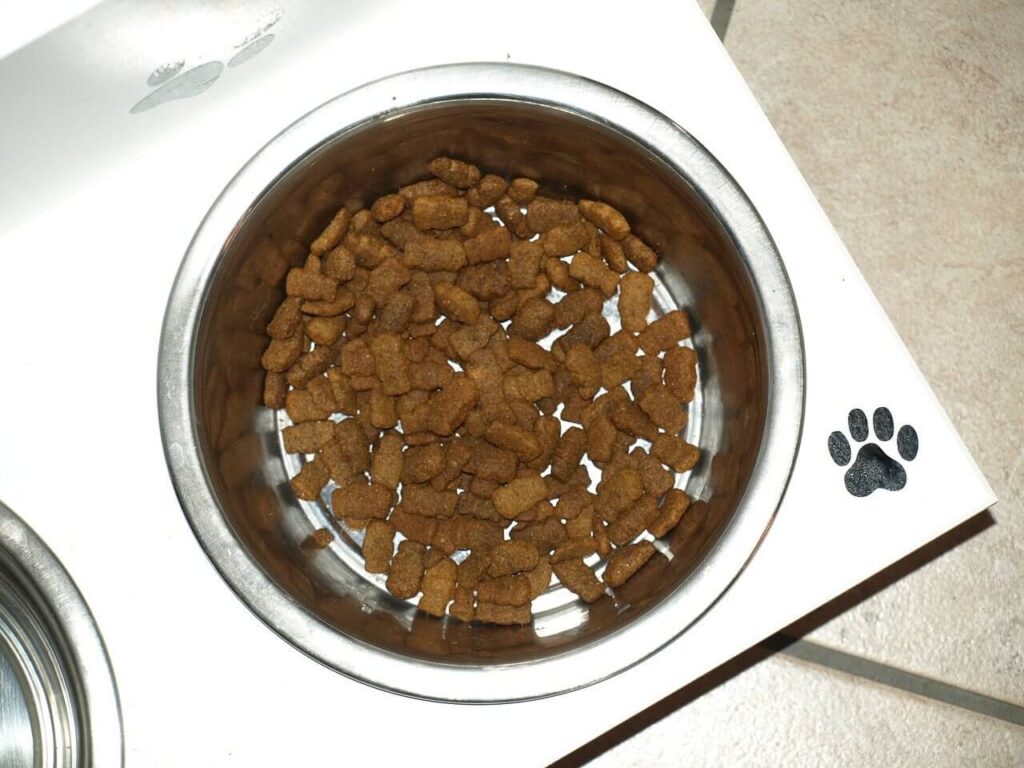
Ask the breeder, rescue or shelter what brand of food your puppy has been on. Even if you don’t plan to keep them on it forever, you will definitely want to keep them on it at first.
There will already be enough stress in the transition of your puppy leaving its mother/litter or the previous place it knew as home, and you DO NOT want to switch them to a new type of food right now, if you can avoid it.
You will have a sick, upset puppy if you transition their food abruptly, and we promise you that the mess you will have to clean up will be VERY unpleasant.
For more on how much Labradors cost to own, and ways to plan for pet expenses, read more in the Cost of Owning a Labrador: 9 Expenses for New Owners.
3. Puppy-Proof Your Home
The next step in critical things to do before you bring your new puppy home is to puppy-proof the environment where your puppy will be spending most of its time.
Many puppies, especially Labradors, are by nature playful, inquisitive, and mischievous.
Wait, you were expecting these little angels to be perfect?
In our experience, every beautiful Lab we’ve gotten, whether puppy or rescue, whatever the age, had a little bit of a wild streak from time to time!
And Labradors are known for being one of the “mouthiest” dog breeds around.
This means they will put anything and everything into their mouths. It’s in their nature!
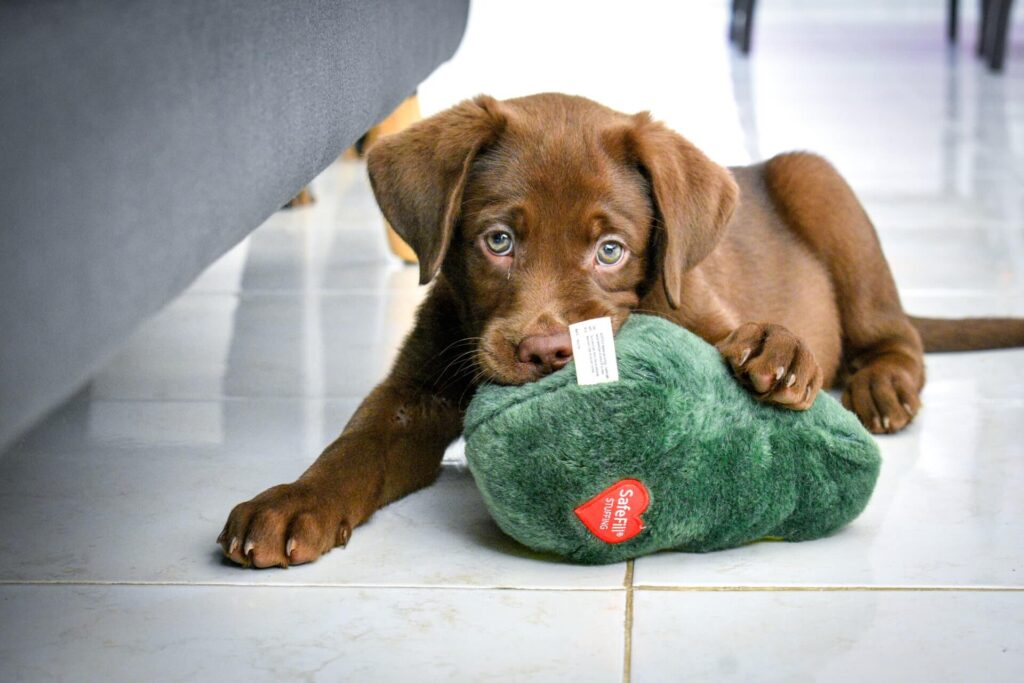
This can depend, of course, on the temperament of your particular puppy, and you may end up with the world’s easiest puppy that doesn’t put anything in their mouth.
We’re going to hope this is the case for you, but more than likely you are going to have a puppy who thinks your whole house is fair game!
Steps to Puppy-Proofing Your Home:
- Close off doors to your house that you don’t want to allow your puppy to enter.
- Install baby gates or puppy gates (you can find them at a pet store or Amazon) to block rooms that you want to access easily, but don’t want your puppy in.
- Pick up shoes, socks, and loose clothing and put them away in closets (or behind closed doors).
- Check the lower shelves of your pantry if your pup might have access there.
- Hide anything of sentimental value for the time being.
- Clean up your coffee tables, side tables, and any other places you have books, loose papers, home decor that looks tantalizing to be chewed, etc.
- Kids’ toys… the great Labrador treat! Make sure that the toys in your kids’ playrooms are secured.
Labs are NOTORIOUS for needing surgery for foreign-body ingestion (meaning, they eat items they aren’t supposed to that in some cases require surgical removal).
This is why it’s especially important for small items, such as your kids’ toys (like Legos), to be up and out of the way.
Now that we’ve covered a few basics, let’s move on to a few more things to do before you bring your new puppy home.
4. Decide Where Your Puppy Will Sleep
It’s important to give your new puppy consistency in sleeping arrangements from the very beginning.
This means you need to have a conversation with the rest of your household on where your new puppy will sleep.
It will be easier if you have this discussion with the members of your household ahead of time, as one of the easier things to do before you bring your new puppy home.
Your puppy’s sleeping spot can be in someone’s bedroom, or the living room, or the kitchen, but please don’t put them outside. That hurts our Labrador-loving hearts!
While Labs love to play outside, it’s not a great idea to leave them outside to live. Labs are very attached to humans and thrive on interaction, play, and attention.
In some cases, exposure to severe hot and cold temperatures can cause illness or death in your dog, and we know you don’t want that happening to your new Labrador puppy.
Inside your home, we suggest you put them in a wire crate from the first night you bring them home, as it will help with boundaries and also potty training.
Also, sleeping in the same room night after night will allow your pup to adjust to their new environment faster and with more confidence and consistency.
This will be good for you and for them.
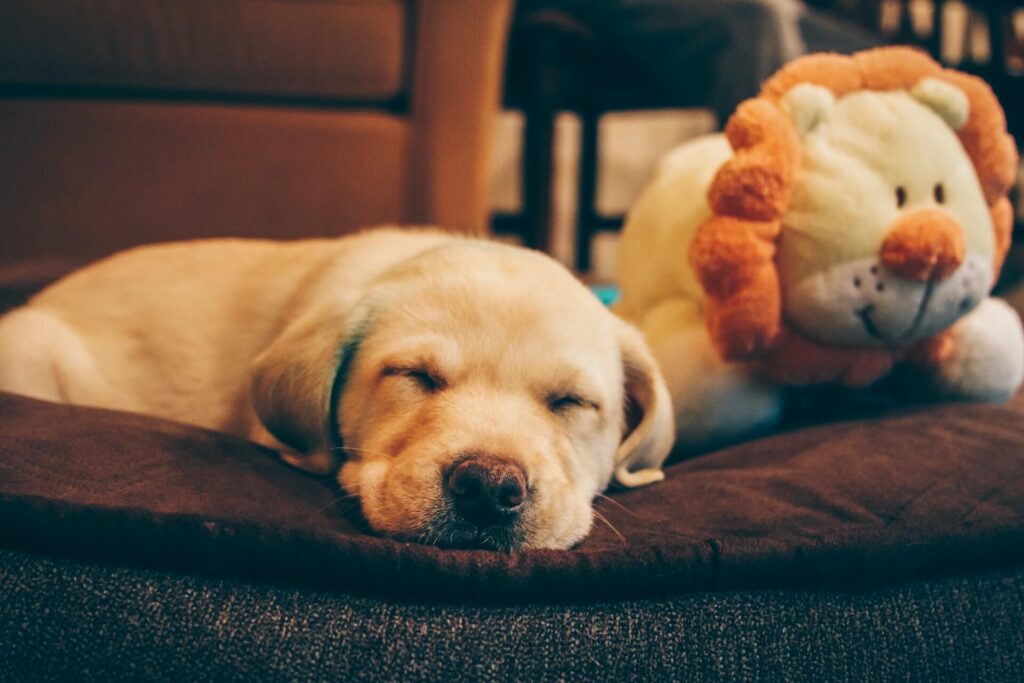
We recommend you place the crate on a tile floor if you have one in your house, or with a good amount of blankets around should you have a puppy accident.
Labs (and dogs in general) won’t typically go potty in their crates, but young puppies still learning a routine might not make it very far once they get out to go.
Sometimes we get asked this interesting question…. should I let my puppy sleep on my bed? Ahh, the cuddles could be amazing.
But you could also roll over and injure them.
We’ve allowed our Labs to sleep on our bed and they keep telling us they love it! But that doesn’t mean you need to do that. Do what you feel is best, and you can gradually adjust over time.
Be aware that young puppies behave somewhat like babies… and if you give them a spot on your bed, you might have a very hard time going backwards to having them sleep in their crate (especially at the beginning).
Just start in the direction that you intend to continue, and be aware that some dogs, especially intelligent Labrador Retrievers, can be especially fast learners.
They’ll pick up on how much fun it is to cuddle with you and won’t want to be alone! They’ll look at you with those eyes and those floppy ears. And their little noses… and you won’t be able to say no.
After you’ve decided on a place for your puppy to sleep, it’s important to locate a vet and schedule your puppy’s first appointment in advance.
5. Find a Veterinarian & Schedule An Initial Wellness Check
Even if you’ve gotten your puppy from an amazing, honest, and ethical breeder, it’s always a good idea to schedule a wellness check-up with a veterinarian within the first week after you bring home your pup.
Before you get your dog, you should schedule this appointment so that you’re not faced with trying to remember to do one more thing after your puppy arrives.
If you already have a veterinarian for your existing pets, start there.
Your vet will likely be excited for you, and if they’re anything like ours, the staff will bicker over who gets to take selfies with the new puppy when you arrive for your first appointment with your new, adorable pup!
If this is your first pet and you’re searching for a veterinarian, ask around for referrals from friends and check reviews online.
Also check social media groups, including those for Labrador Retriever owners, or dog owners in your area, for recommendations of who to go to (and who to avoid).
6. Secure Your Yard or Outdoor Space
One area that’s often overlooked in the things to do before you bring your new puppy home is to secure your yard or outdoor space.
Make sure if you have a fenced yard that your gate is lockable and secure.
Check to make sure that there aren’t any objects that pose a hazard to a young puppy or tight places where they could squeeze under or out, as they might be inquisitive and get themselves stuck.
If you have water nearby, your puppy may NOT know how to swim yet, if the breeder (or rescue/shelter) has not exposed them to water.
Please make sure that your very young puppy isn’t allowed around a water source without your direct supervision.
For more information on introducing your Lab to swimming, and how to get a new puppy to learn to be comfortable around water, check out our guide to Labradors and swimming.
Be aware of any plants that you might have in your yard that can be toxic to pets, such as avocado trees, oleander, and English ivy.
Labradors can be curious and mischievous, and they often try to eat grass or other plants outside, which can make them sick.
We had an incident with one of our Labs ingesting avocado (without us knowing) that nearly killed him, and he was over 80 lbs at the time. A smaller Lab puppy weighing under 15 lbs could be at much higher risk for severe sickness from accidentally ingesting harmful plants or foods.
A more detailed list of toxic plants to watch out for can be found here.

We moved to a desert climate and had oleander in our yard without even realizing what it was until a relative pointed it out!
If your yard is not fenced, and your dog might accidentally make its way over to another yard, check to see if your neighbors have any of these plants that you may need to watch out for.
Also, if it’s around any holidays when you get your new puppy, please remember that lilies, mistletoe, and to some degree poinsettias, pose a danger to your puppy.
Puppies are small and it won’t take ingesting a lot of a toxic substance or plant to really do some serious harm. So please watch out in your yard and surrounding outdoor spaces for any plants or other items that could pose a threat to a curious young Lab puppy.
7. Create a Flexible Schedule
One thing that’s often overlooked in the flurry of things to do before you bring your new puppy home is to create a flexible schedule for your new puppy when they arrive.
We have a complete guide to the benefits of establishing a puppy schedule, and a full explanation of how it can help you and your dog, but we’ll cover just a few quick things to know here.
No puppy is going to follow an exact schedule from the start, but we’re suggesting you get a rough idea of what kind of schedule you want to get your dog on, so it’s not a total free-for-all.
This is also critical to helping all the members of your household stay on board with establishing clear expectations and responsibilities.
You’ll find that things will run more smoothly if everyone knows what’s expected of them at roughly what times.
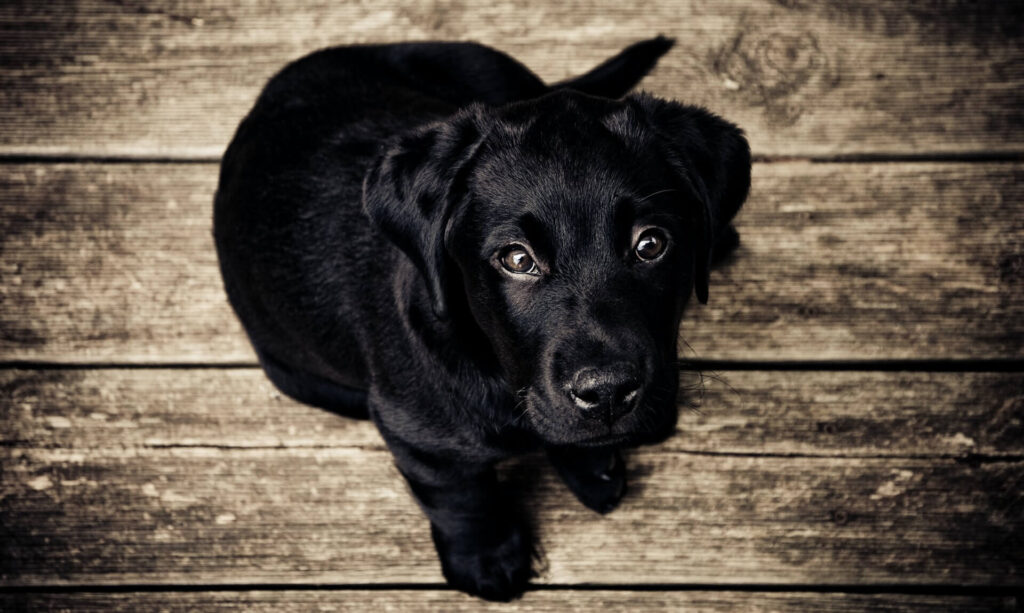
Your schedule doesn’t have to be complicated or exaggerated. It can simply be a guideline to help you stay on track.
Over time your puppy will start to pick up on the general idea of the schedule that you’re implementing and will be learning quickly to follow along.
Please don’t get upset at your puppy if they don’t follow the schedule. Like humans, they need time to adjust and adapt to a new environment.
Guidelines for a Basic Puppy Schedule:
- 6 am: wake-up & potty break
- 6:15 am: breakfast (and another potty break)
- 7-12 noon: naptime and potty breaks as needed, every hour at first and more often after waking up from a nap
- 12 noon: lunchtime & potty break
- 1-5 pm: alternating naps, playtime & potty breaks often
- 5 pm: dinnertime & potty break
- 6 pm-bedtime: playtime, naptime, potty breaks as needed
- Overnight: short potty breaks only as needed
You don’t need to go crazy or obsess about the schedule. It’s just to give you a rough idea of how much activity, work, and energy will be taken up when you bring your puppy home.
Feel free to adjust and adapt the schedule to whatever suits your household and your personality. It doesn’t have to be really complicated, just a general guideline to give you a place to start, and give your puppy a consistent routine.
Be flexible and adaptable, and you’re both going to do just fine!
Summary – 7 Things to Do Before You Bring Home a New Labrador Puppy
In all the excitement and anticipation of getting a new dog, there are many helpful things you can do to prepare ahead of time for your new arrival, which will reduce your stress and make life easier.
By following these seven things to do before you bring your new puppy home, you’ll be more relaxed, better prepared, and be on the way to enjoying the experience of welcoming your new furry family member! For more information on what to expect with a young puppy, read more about the changes that newborn puppies experience in the first few weeks of life.

